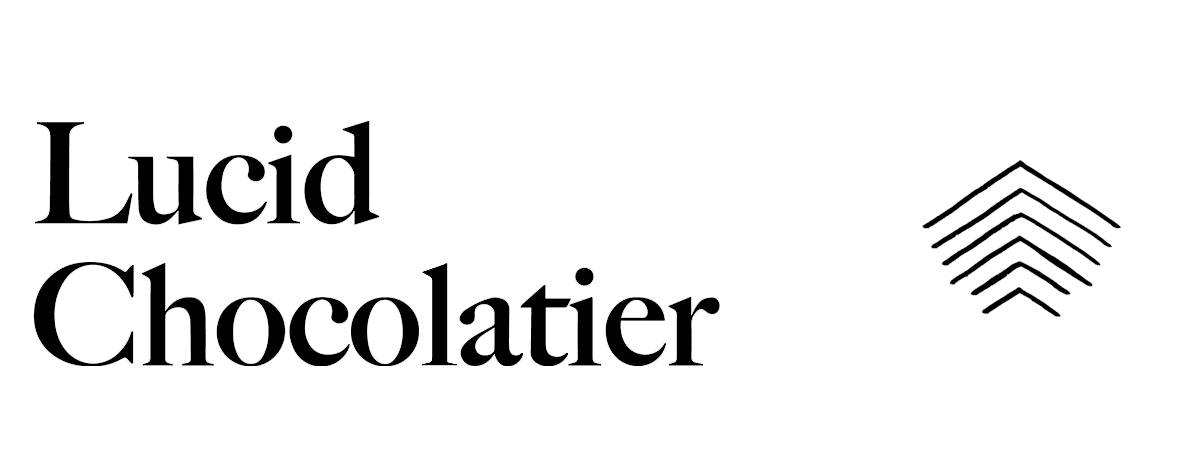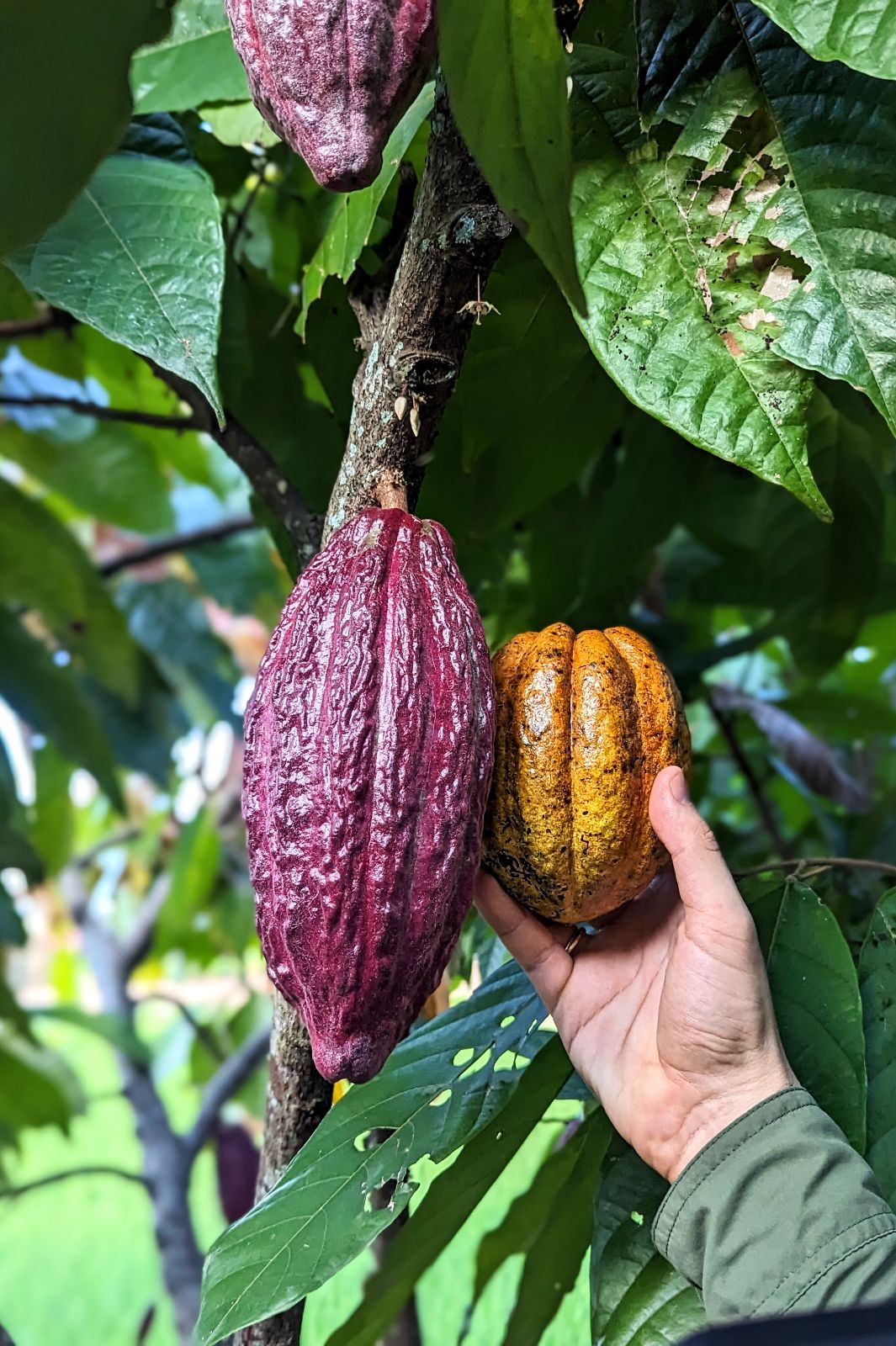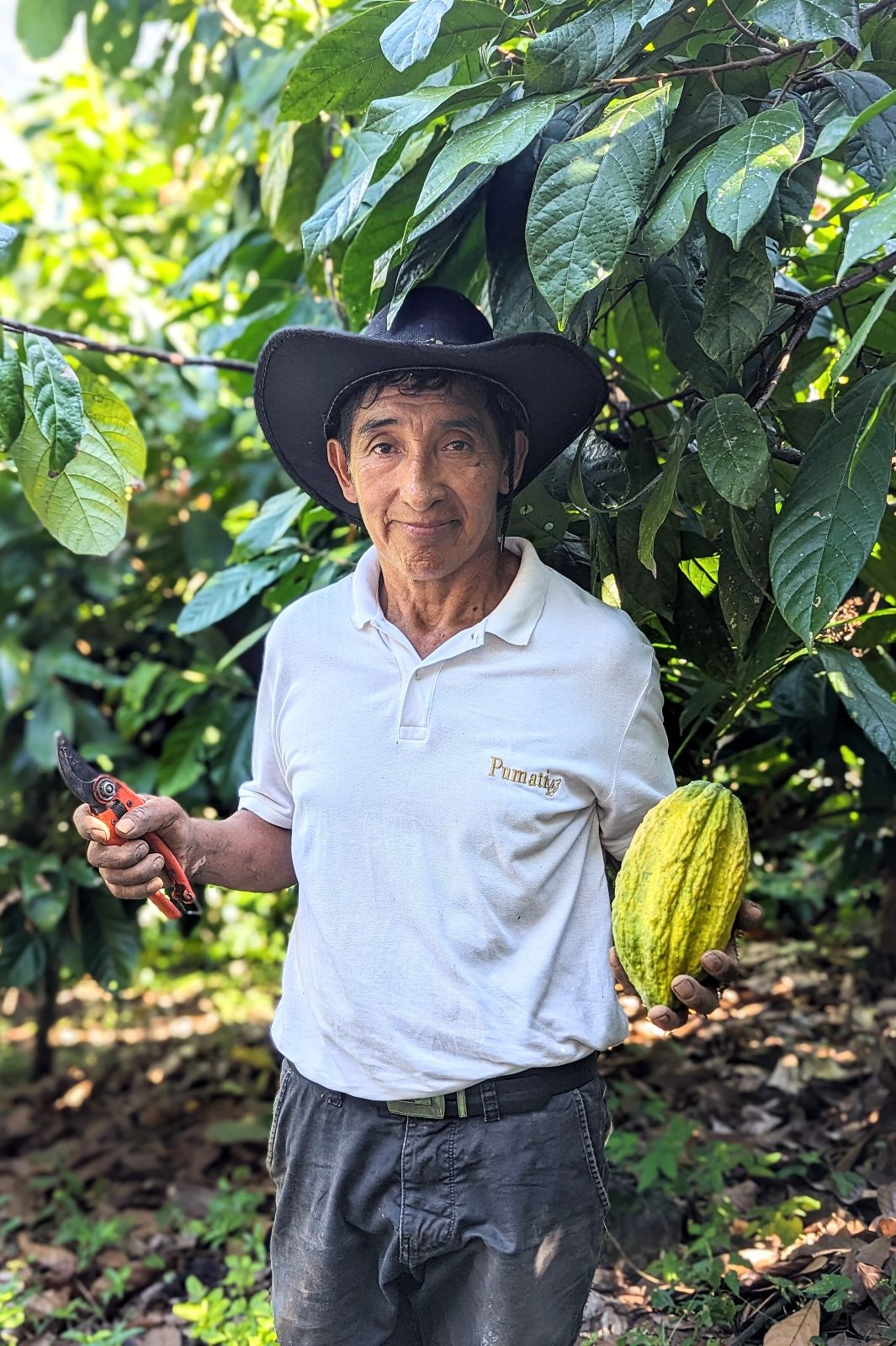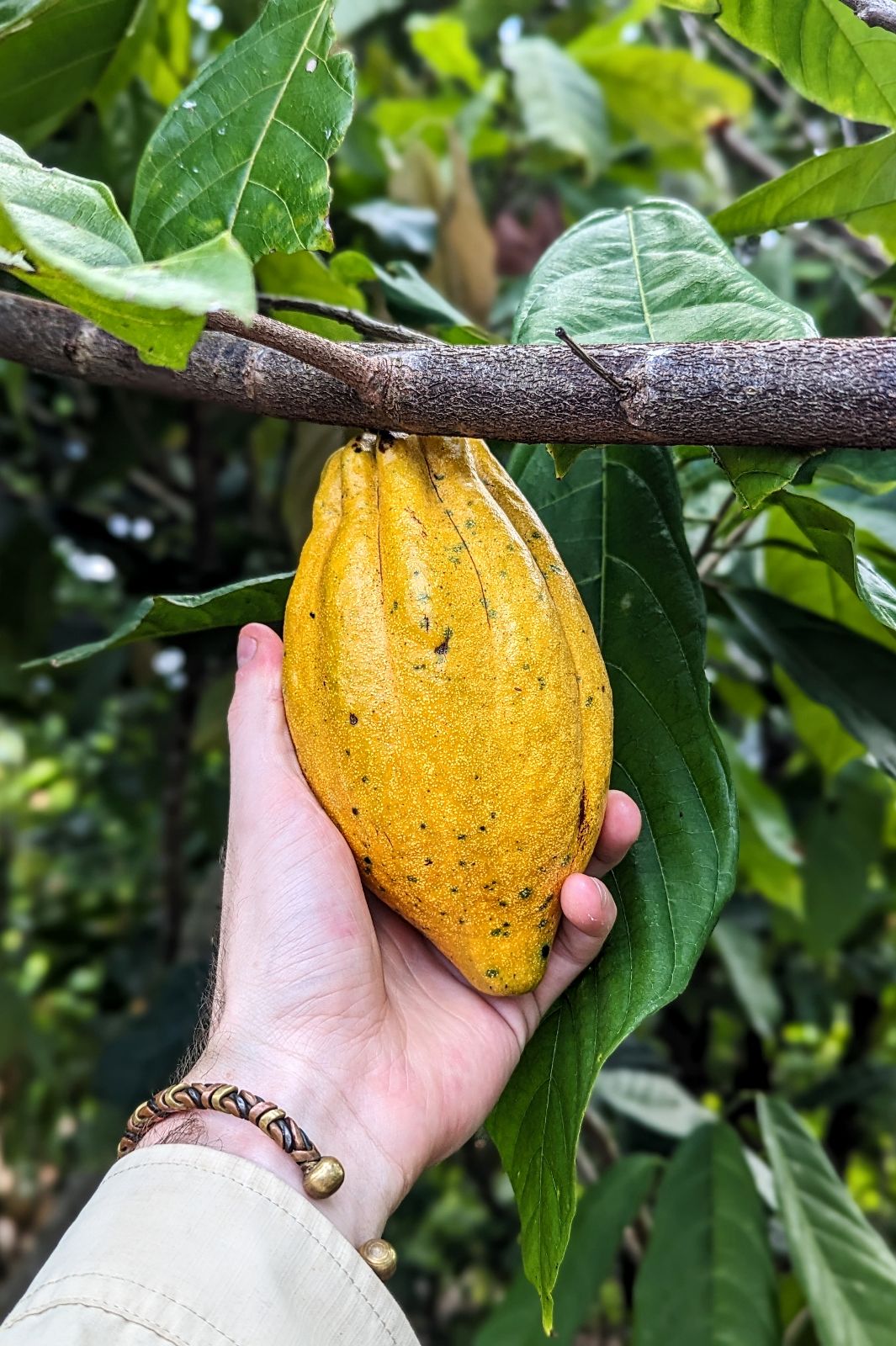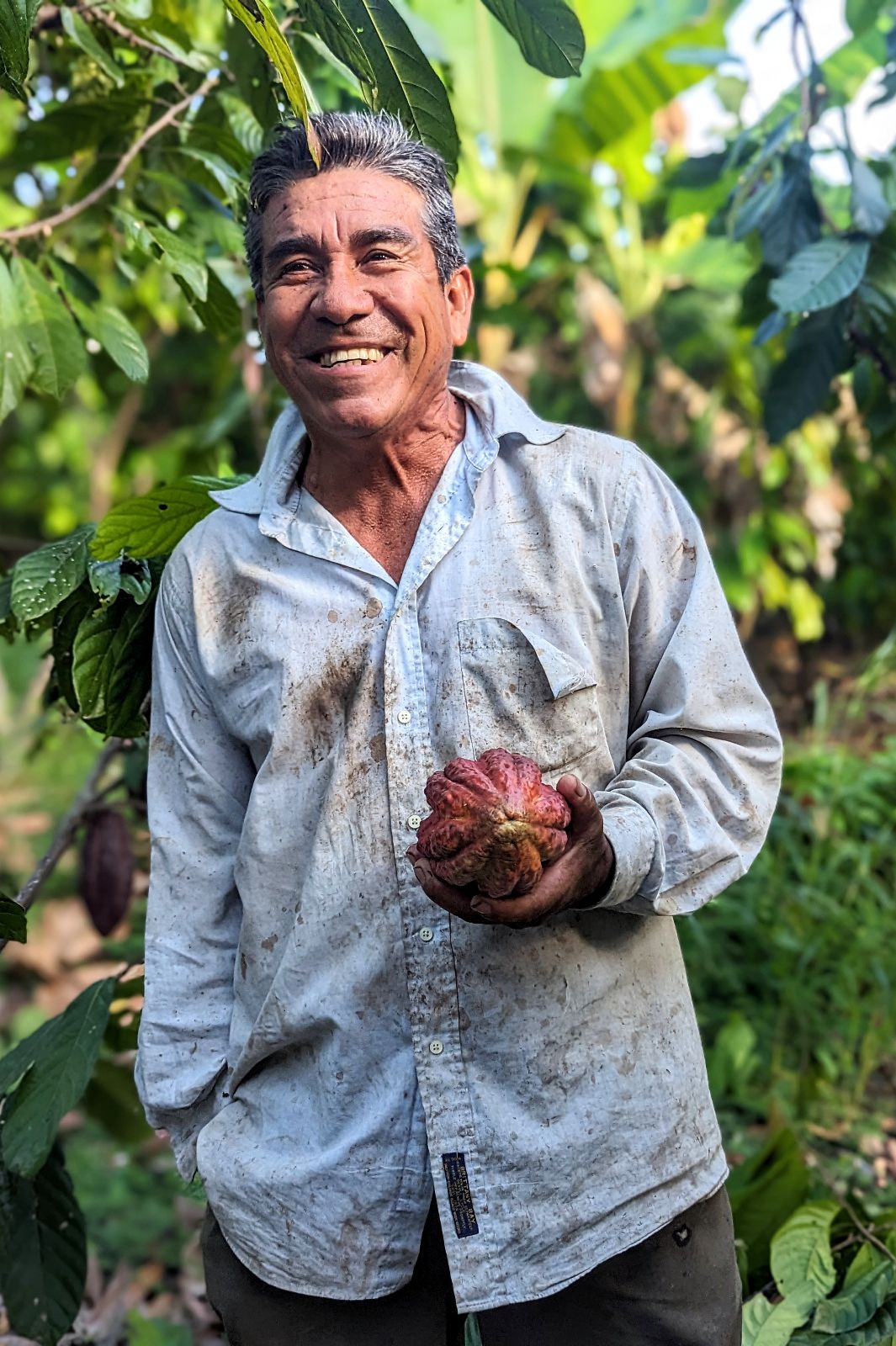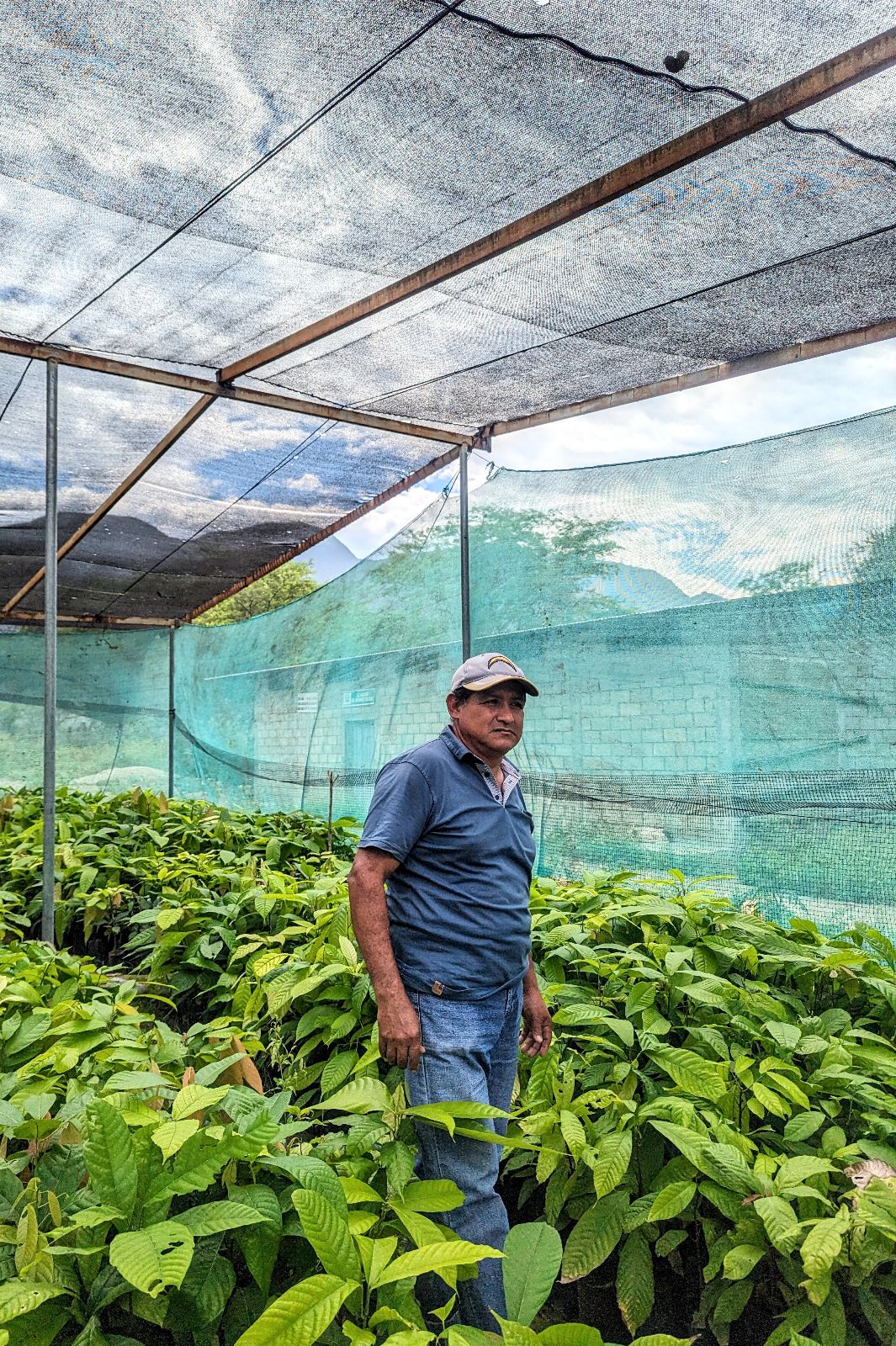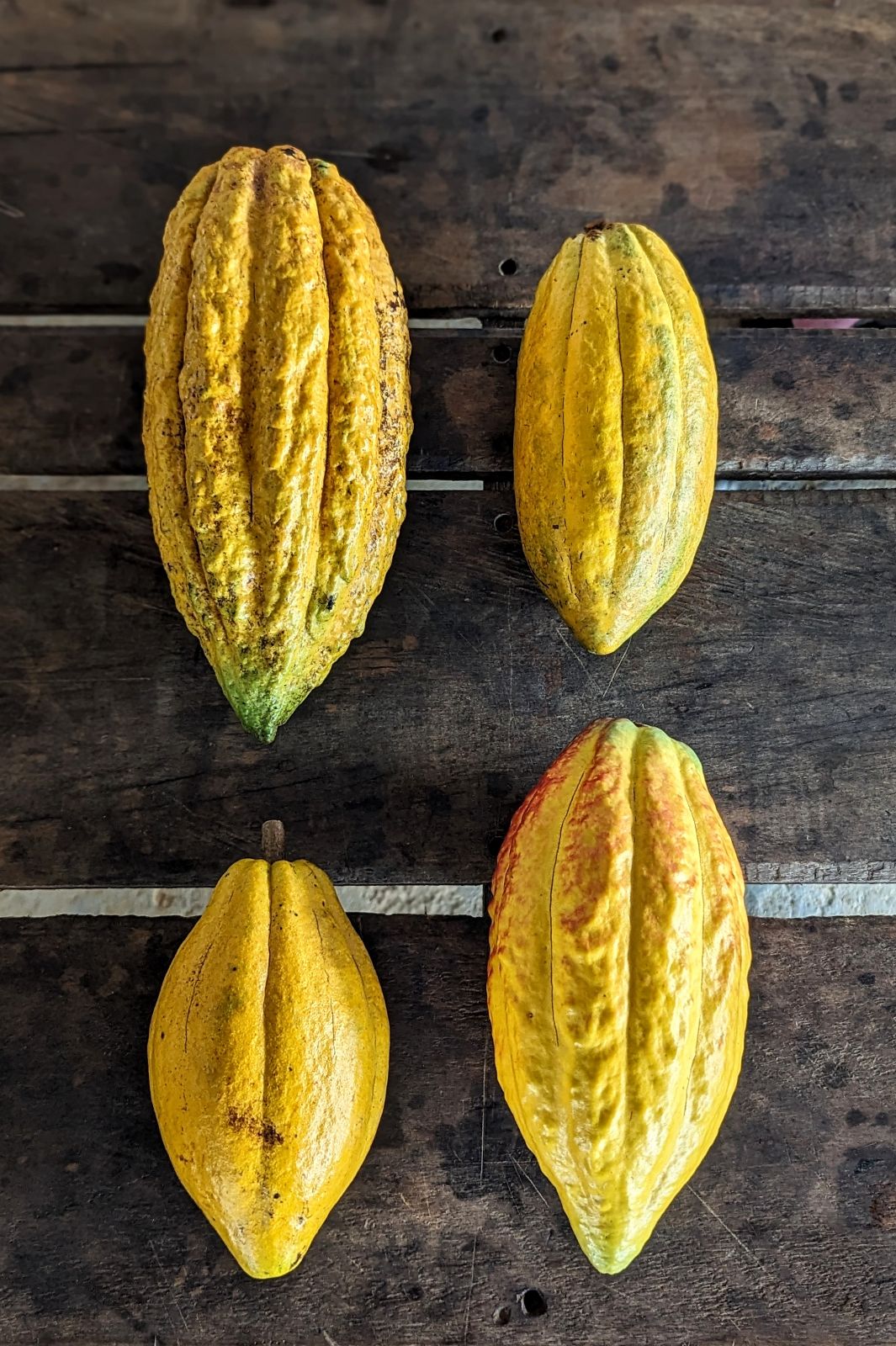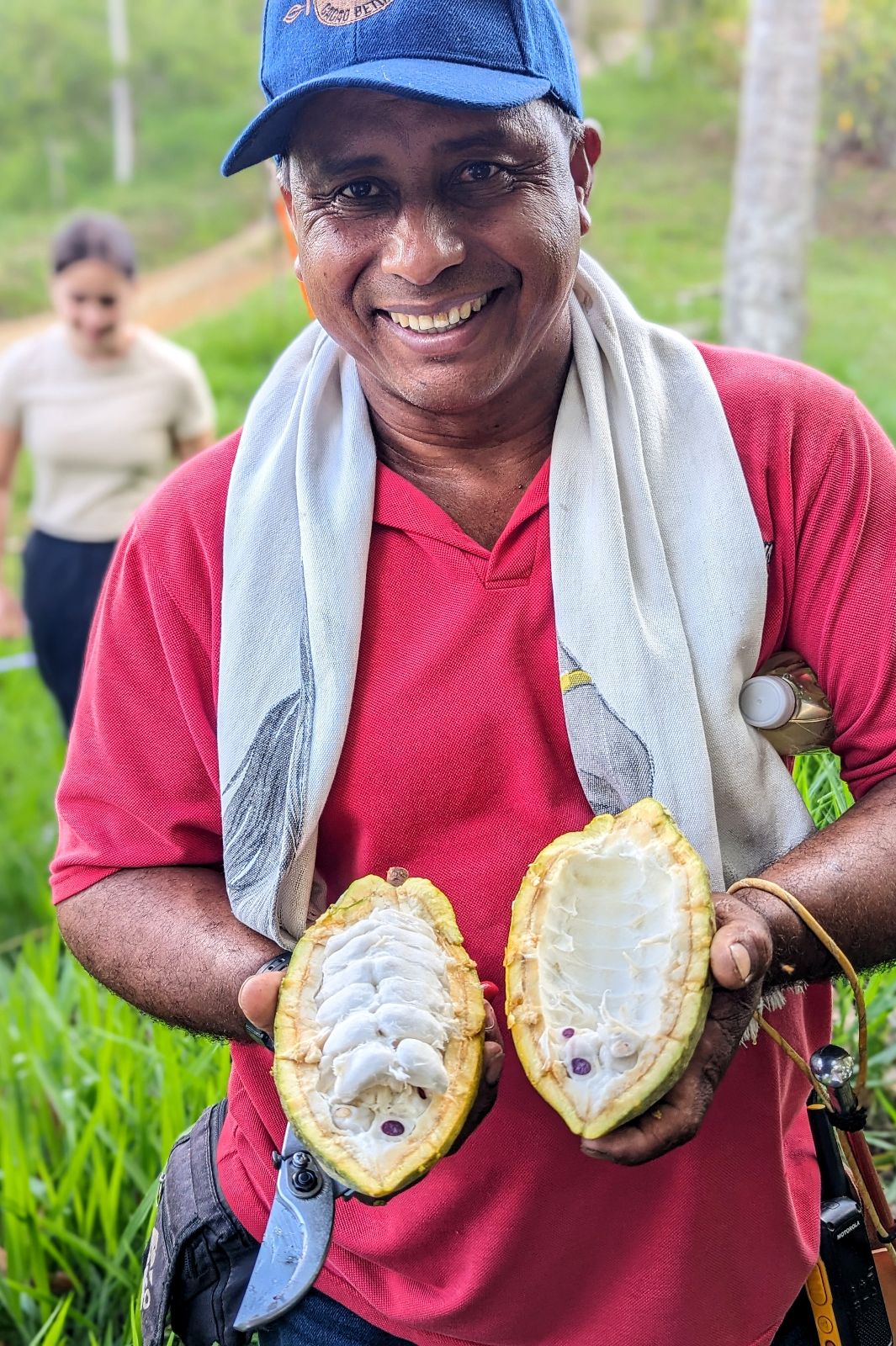Nestled deep within the vast rainforests of Northern Peru’s Amazona region dwell the indigenous Awajun communities.
Amongst an untarnished area of the Amazon, they use long-standing traditional farming practices to produce some of the world’s finest organic cacao - both Criollo and Trinitario varieties.
As a society with a symbiotic relationship with the surrounding rainforest, the Awajun and Huambisa have long held a structure of men as hunter-gatherers, and women farming and nurturing the community. There has been a shift in importance in recent years, however, as farming cacao has proven to be even more financially beneficial than hunting and fishing. An increase in government funding for research around post-harvesting practices has only increased the quality of this industry for the region, leading to better infrastructure, education, housing, health care and more. This has led to a sharp rise in equality for the women of these tribes, who now play a major role in the economic well-being of their communities.
The Chuncho origin also comes from the Cuzco region, historically the department which has produced the most Cacao in Peru. One of the key distinctions this origin has from others in the same department is its genetic make-up.
Chuncho has been classified as its own genetic variety, meaning it doesn’t fall under the traditional varietal umbrella. Currently, there are 7 unique genetic classifications of Chuncho, however, it is believed that many more will be officially identified soon.
Our primary supplier, Amazon Specialties, has helped a collective in the Urubamba Valley flourish after providing them with knowledge and equipment. Working directly with their farm providers, this collective has become a trail-blazing entity, with more and more chocolate makers coming from the region - a rarity for Peru.
The direct nature of this relationship between local farmers and chocolate makers has very promising connotations for chocolate makers around the world sourcing their beans from Peru. The requirements for quality production relayed to the farmers have helped develop better harvesting and post-harvest methods, leading to higher quality cacao for chocolate making.
Cusco Cacao hails from the Cuzco department of Peru. Much of the Peruvian cacao was cultivated in this department prior to colonization and commercialization, however since then it has drifted behind the jungle-based departments in scale while they have grown exponentially.
A very important region for Peruvian cacao historically, there is a valley in Cuzco named the Urubamba Valley, which has strong significance to the story of the area. Dating back to Incan times, this valley was used as a route into the jungle from up in the Andes mountains. The Incans would also meet natives for trade purposes in the valley.
The region’s culture and mountainous climate give Cuzco cacao unique and largely desirable flavours. Based on their heritage, cacao producers from this area are taking a rare step in cacao farming, by starting their chocolate-making operations to add wealth and career opportunities to their local communities. We handle all our beans respectfully, particularly the small and delicate ones from Cuzco. Working with these beans is a privilege; they are a treasured part of Incan culture rich in history.
Located in the North Amazonian mountains between the Cajamarca and the Amazonas departments, these organic beans originate from the valleys of the Marañon river. Farmers have been living in this valley for generations, the elders teaching the young. A tradition that will be kept alive. Accepted by many as one of the earliest varieties from which modern varieties derive. It is this cacao that motivated Anthony Bourdain and Éric Ripert to come to Peru searching for elusive and mysterious white beans.
The Marañon bean, also known as the Fortunato No. 4, is cultivated at around 900-1300m. It's known as this name because when the USDA conducted genetic tests, they took leaves from a tree from the Fortunato family farm. Of the various cacao tree leaf samples the USDA had, the Fortunato sample was the 4th tested and hence "Fortunato No. 4".
This cacao is also very unique because it has maintained its identity through the course of time. Because of the steep valley walls of the Marañon canyon, the cacao in its valley has been isolated from other genetic influences for many centuries.
Located within the department of Junin is the very small district of Pangoa. In this district, they carry out their production through small native plantations. The native communities that farm the Pangoa cacao are Nomatsigenga and Sonomoro. The name derives from the native Ashaninca word "pangotsi', meaning "home". a reference to the people of the region's hospitality.
This area has some of the highest altitude cacao farming, harvested up to 1300 meters above sea level and shares the benefits of broader government investment with the rest of the VRAE region. The tighter locale of this origin, however, provides a more concentrated flavour profile to showcase its terroir.
Hailing from the Northern desert coast of Peru in the Piura department is the distinctive Piura White. A mixture of native criollos, up to 30% of the beans come through white. Dating back to pre-colonization days, this bean has been an esteemed and treasured type of cacao. Post-colonization, the Spaniards followed suit by earmarking this lower elevation district for premium cacao origins. Piura White is harvested between 50-400m, which is a much lower elevation than most other departments.
With cacao generally growing in the jungle or tropical climates, another variation is that Piura is a desert. The terroir is therefore vastly different to other cacao growing regions, creating very unique beans.
Due to the arid nature of the climate in Piura, the native cacao varieties have adapted and can survive with much less humidity and water. Piura White, therefore, holds a very low percentage of fat and acidity. Conversely, they will not survive if transplanted into a more humid region.
Whereas the rest of Peru has the Andes separating jungle and desert, the smaller, lower mountains of this area have helped increase the biodiversity of the region. Over thousands of years, it is believed that the cacao tree variety in the Piura region adapted from various trials of natives trying to cultivate the different cacao varieties found in the jungle.
Located within the department of Junin is the very small district of Pangoa. In this district, they carry out their production through small native plantations. The native communities that farm the Pangoa cacao are Nomatsigenga and Sonomoro. The name derives from the native Ashaninca word "pangotsi', meaning "home". a reference to the people of the region's hospitality.
This area has some of the highest altitude cacao farming, harvested up to 1300 meters above sea level and shares the benefits of broader government investment with the rest of the VRAE region. The tighter locale of this origin, however, provides a more concentrated flavour profile to showcase its terroir.
Santiago de Sisa represents the premium harvest of the San Martin department. The rugged mountain terrain is ill-suited to most crops but Ideal for cacao. The promotion of organic cultivation methods by Peru's government has led to many organic plantations in the region, which has helped make Peru the world's largest supplier of organic cacao. Planting this as an alternative to Coca has helped eliminate a lot of the malicious or dangerous activities that are unfortunately associated with the farming of that plant.
Sisa cacao comes specifically from within the province of El Dorado, furthermore within the district of ‘Santiago de Sisa’ which has a rough area of 300 square km. Santiago De Sisa is home to around 14,000 people, with various native communities. The native people in this area are the ‘Quechua Lamista’ (they like to call themselves ‘Llacuash’). Our supplier, Amazon Specialties, pays the co-operative they source from above market farmgate price and that in turn is being purchased from more than 250 local producers.
The San Martin department is the most productive in Peru, producing more than 40% of the country's annual harvest.
Originating from a remote area within the VRAE region in Peru's Southern jungle, the Tsiriari is one of a kind. The 'Cooperativa de Mujeres Emprendedoras Warmi Tsinani" (translates roughly to Women Entrepreneurs Cooperative, of whom all 14 active members are women) has been working since 2010 on its 25-hectare cacao plantation.
This cooperative has emphasized diversity by partner planting crops such as coffee, banana and ginger. Our supplier Amazon Specialties is adamant that the best way to bring harmony to the environment is with diversity, and the best way to bring sustainable income for the farmers and homeostasis to the environment is with multi-crop farming.
Utilising aromatic criollos and gaining support from government investment, the Tsirlari farmers are bringing harmony to their environment and turning around a past of dangerous but legal cocoa plantations.
In the mid-southern jungle of Peru, 3 rivers meet near the borders of the Junin, Cuzco, and Ayacucho departments - creating the Valley of Rivers or VRAE. Harvested at a range of 400-1300m, it is a highly aromatic cacao that has had 10 plus years of government research and funding to help the local farmers increase their knowledge and hone their craft.
Made possible by Peru's unique biodiversity, the farmers have utilised selective breeding prioritising the aromatic aspects of their cacao. In tandem with this, the extensive research over time has culminated in creation of VRAE-15 and VRAE-99. It embodies many elements of the modern Peruvian cacao and represents a highly educated co-op with a beautifully associated terroir distinct to Southern Peru.
